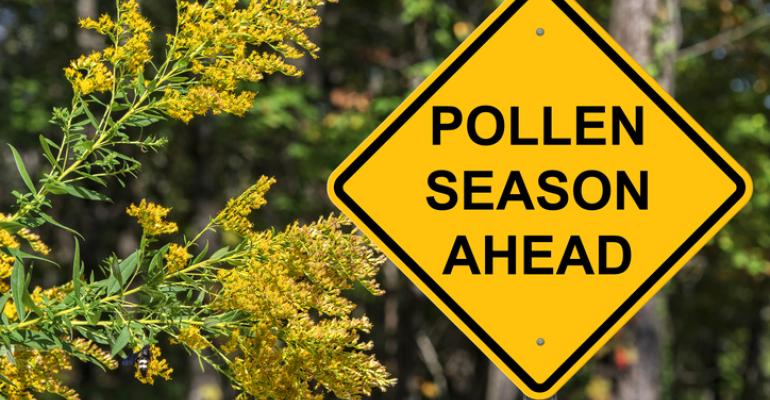Springtime events are both good news and bad news for meeting planners. While the weather is good enough for a beautiful outdoor reception, it’s also allergy season and there are more than 50 million sufferers in the U.S., according to the Centers for Disease Control and Prevention. So, the odds are good that at least a couple of your attendees will be sneezing their way through your outdoor event. While this YouTube clip of pollen being shaken off a tree is an extreme example, short of holding all your events in a vacuum-sealed room, there will be at least some pollen in the air this season. Meeting planners take care with menus to accommodate food allergies and preferences, so it makes sense to consider the comfort of attendees with airborne allergies.
Allergist Dr. Clifford Bassett, medical director of Allergy & Asthma Care of New York and a member of the American College of Allergy, Asthma, and Immunology, dispels some myths about pollen counts and gives advice on holding outdoor events during allergy season.
1. Despite commonly held beliefs, evenings are no more likely to have a lower pollen count than mornings. Bassett says, “There is no sure way to predict when seasonal pollen floating in the air is most likely to wreak havoc on the millions of unsuspecting eyes and nasal passages in America. During the peak season, and especially when it is dry, pollen levels rise significantly throughout the day, regardless of whether it is morning or early evening.”
2. If you have a choice of venue, for allergy sufferers some are better than others. Bassett says, “Certain areas may be more likely to have lower pollen levels, such as near a body of water, like a lake, river, or ocean.” Other options to consider are rooftop spaces and stone or brick terraces. However, Bassett says, “All bets may be off when it comes to the wind. The wind acts as a conveyor belt in the air to allow transport of pollen for distances of hundreds of miles.” If you know airborne allergies are an issue for some attendees or VIP guests, keep an eye out for windy weather or the pollen forecast and move the event indoors.
3. If an event lawn is your only option, ask the venue to provide a temporary hard surface, such as a portable dance floor, to cover at least some of the area so that attendees’ shoes are not constantly kicking up irritants. Bassett also suggests asking the hotel or venue not to mow the grass the day of the event, as that may also drive up irritating grass and mold spores.
4. When choosing flowers for your event space, consider how allergy-friendly they are, as well as looks. Barrett says he avoids lavender, gerbera daisies, wisteria, jasmine, baby’s breath, zinnias, pussy willow, and sunflowers. Better alternatives for pollen-sensitive attendees include azaleas, Asiatic lilies, begonias, bougainvillea, crocuses, cyclamen, hydrangeas, orchids, petunias, peonies, roses (non-fragrant hybrids), tulips, and violets.
5. For occasional sufferers who rarely get allergies, keeping a box of tissues on hand in case of watery eyes is probably enough. But Bassett suggests making sure that you note the venue is outside on your invitations so that long-term sufferers can plan to pre-treat against symptoms or bring medication with them.





